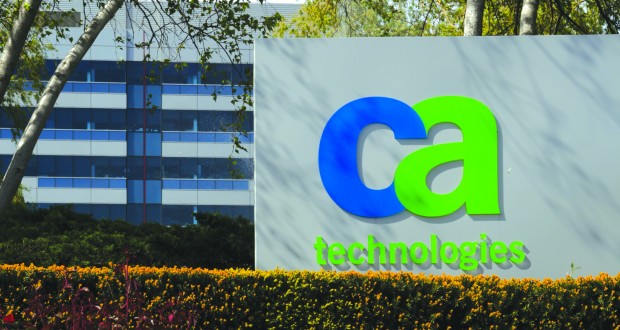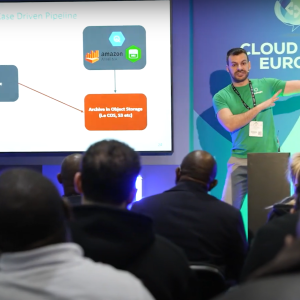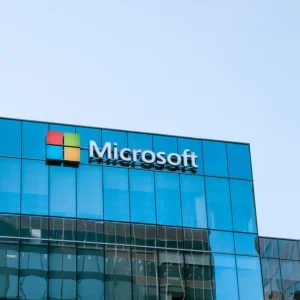
One does not normally associate Dev Ops with the mission critical environments managed by CA Technologies. Mainframes, systems and applications management yes, but Dev Ops?
Kieran Taylor, is Senior Director Dev Ops at CA Technologies. Mr Taylor answers our questions and blows away some pre-conceptions.
CBR: Where does Dev Ops play in the mission critical world where CA normally operates?
Kieran Taylor: "Sometimes you’ll hear that Dev Ops is used by the Unicorns or Netflix and Facebook and other internet based businesses. As well as ‘Unicorns’ it is equally important for ‘Horses.’ That is the enterprise companies that have more traditional models who are now realising they need to innovate in order to remain relevant."
"We commonly cite Uber and its disruptive business model enabled by software but across the board, insurance, banking, manufacturing companies and other traditional businesses are now turning to Dev Ops to increase the volume, variety and velocity of application deployment."
CBR: How does CA define Dev Ops?
KT: "Dev Ops is not a market, it is not a specific set of tools. It really is a methodology that focuses on changes, in people, process and technologies. So you’ll hear a lot of people talk about the cultural change that Dev Ops represents. And CA bought Rally Software (acquired May 2015) because it offers the consulting and platform for you to change your culture."
How CA defines Dev Ops, from a product standpoint, we offer a variety of solutions that automate the test and release cycle. So some of those products are CA Release Automation, CA Service Management and with Rally we have a consulting arm, that helps companies transform their approaches to software releases."
CBR: How does Dev Ops differ from traditional software development? Does that involve restructuring of teams? Does the Dev Ops philosophy of write today, test tomorrow, then used by 100m people, play in enterprise environments?
KT:" Bi-model IT – the old monolithic traditional IT structures, customer management, supply chain management, those are going to remain at their slower more predictable pace. But even in these old school enterprises, a mobile application as you said, might be built by a Pod of people, as a separate initiative. It is new to the business, so they’re going to grab developers, they’re going to grab operation people and they’re going to that pod and iterate in a sprint-like manner, that’s quite different from the traditional model."
CBR: Take a Goldman or a UBS, or other investment banks who are the type of companies typically associated with CA are they looking at Dev and automation tools, and what’s their objective, what’s their desired outcome?
KT: "The objective is around omni-channel customer engagement. All consumers expect anytime, anywhere access to our supplier. Whether you are booking an airline ticket or shopping online, even a JP Morgan Chase need to enable this anytime anywhere engagement and that’s what’s disrupting their models.
Even mainframes are not exempt from Dev Ops. Access to mainframes is now being enabled by APIs. So your iPhone needs to connect to data that resides in a mainframe. How is that enabled? It is through APIs. Those APIs are built in a sprint like manner. So you’re seeing Dev ops being integrated into the more traditional IT practices."
CBR: The CA proposition is a mixture of tools, processes and consulting. How do you see yourself selling Dev Ops into traditional markets?"
KT: "We’re going where our customers are leading us, so this is very much our point of entry into the market based on customer requests. The specific tools I would break down between Dev and Ops.
On the dev side, release automation solves the problem of how you track a higher volume of releases. Maintain velocity while not sacrificing the quality of the release. Without release automation you’re doing this in a manual manner which is plagued with human error.
The other product that is key is service virtualisation. So when you code an App and go to test it, how can you emulate the environment it is going to play in? How can you simulate all of these APIs or even a mainframe environment I need to connect to without putting the code into production? You do it by create ing virtualised environment, almost a wind tunnel, And service virtualisation creates that.
On the Ops side. Application performance management is a way to test the performance of the application to ensure it meets customer requirements or KPI. We’l ltest for response time, for usability, basically verify that the app is ready to be used in a production manner.
The classic division between dev roles and ops roles are collapsing. Now we’re seeing developers taking on more of the ops role, what I call shadow ops, these developers can apply ms azure and operations may not even know about it. It is blind to them. So we’re seeing a lot of new role definition."
CBR: That points to the cultural shifts within software environments. Where is it happening?
KT: "Within the more traditional business we see them moving to Devops but we see it with specific products. We have a product called mobile development analytics, that is a product that would be used by a Unicorn, that is being adopted by disruptor businesses whose business is totally based on mobile phones.
I’ve been trying to get a good solid number on the Dev Ops market and its hard to pin down because it’s a philosophy not yet a market."
CBR: How do you see things developing – you’ve got a portfolio and see this as a significant play – why is the market going to care about CA doing this?
KT: "In the C-suite we see that one of the major macro trends in industry is digital transformation and that’s not just about digitising a business process it is really about how do you put the customer first and anywhere engagement.
So the CEOs and CXOs know they need to enable that access. How do they do it? They need to build new apps to enable that and they need to be built, quickly in a high quality manner. First impressions count. You can’t afford to lose a customer through a bad interaction. How do I navigate digital transformation in a successful manner? Dev Ops is the cook book."
CBR: Why does CA have an expertise – Dev Ops is an area that lots of companies want to play in and see an opportunity. Where is the talent? Where has CA invested?
KT: Most of the investment has been on the development side of Dev Ops. We bought ITKO, what you are seeing is a very deliberate and planned execution of how do we deliver tools across the software development lifecycle.
And we create solutions for each stage and now we can deliver it in an integrated solution. That’s our differentiation. There are smaller companies like Puppet or Chef that maybe own one piece. Our objective is to give our customers the full solution across that life cycle."
CBR: Are you using Dev Ops internally?
KT: "We are embracing Dev Ops internally. In my own product lines in application performance management, two years ago, we maybe did two releases per year. Now we’re on a release every three to four months. We are increasing our release cycle. The Rally Software acquisition was in part to accelerate our own development cycles."
CBR: What are the application production environments you will be addressing?
KT: "Today a lot of action is around automation of the software factory, optimising the assembly line. Once they get the software factory running the next stage is how to better anticipate what the customer is going to do with the application. This is user behaviour analytics, predictive analytics where you have a better understanding of the customer needs and the development lifecycle. Today not many companies are doing that. And the business leaders are looking for more insight from IT. How are people using my applications, what’s working and what’s not?"






